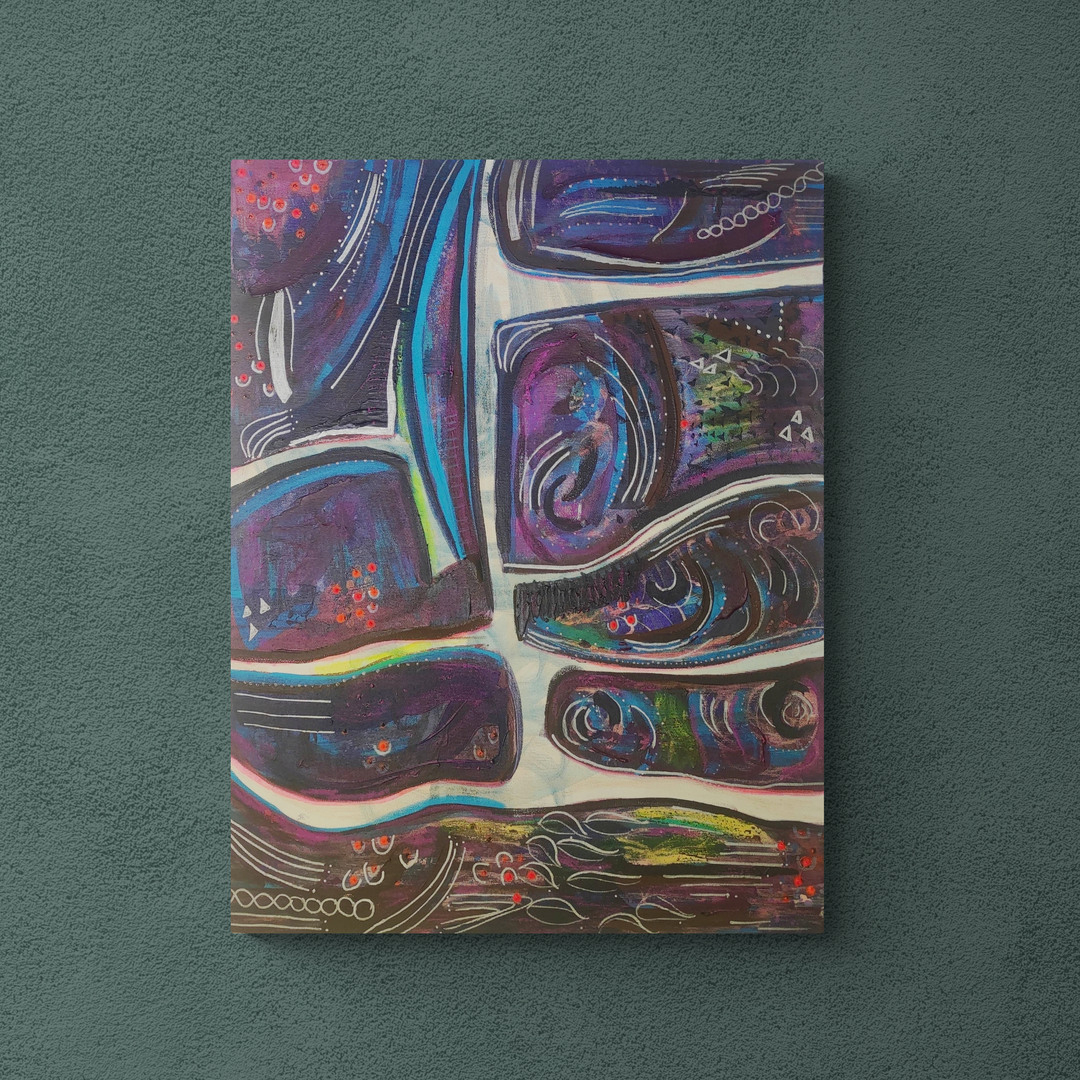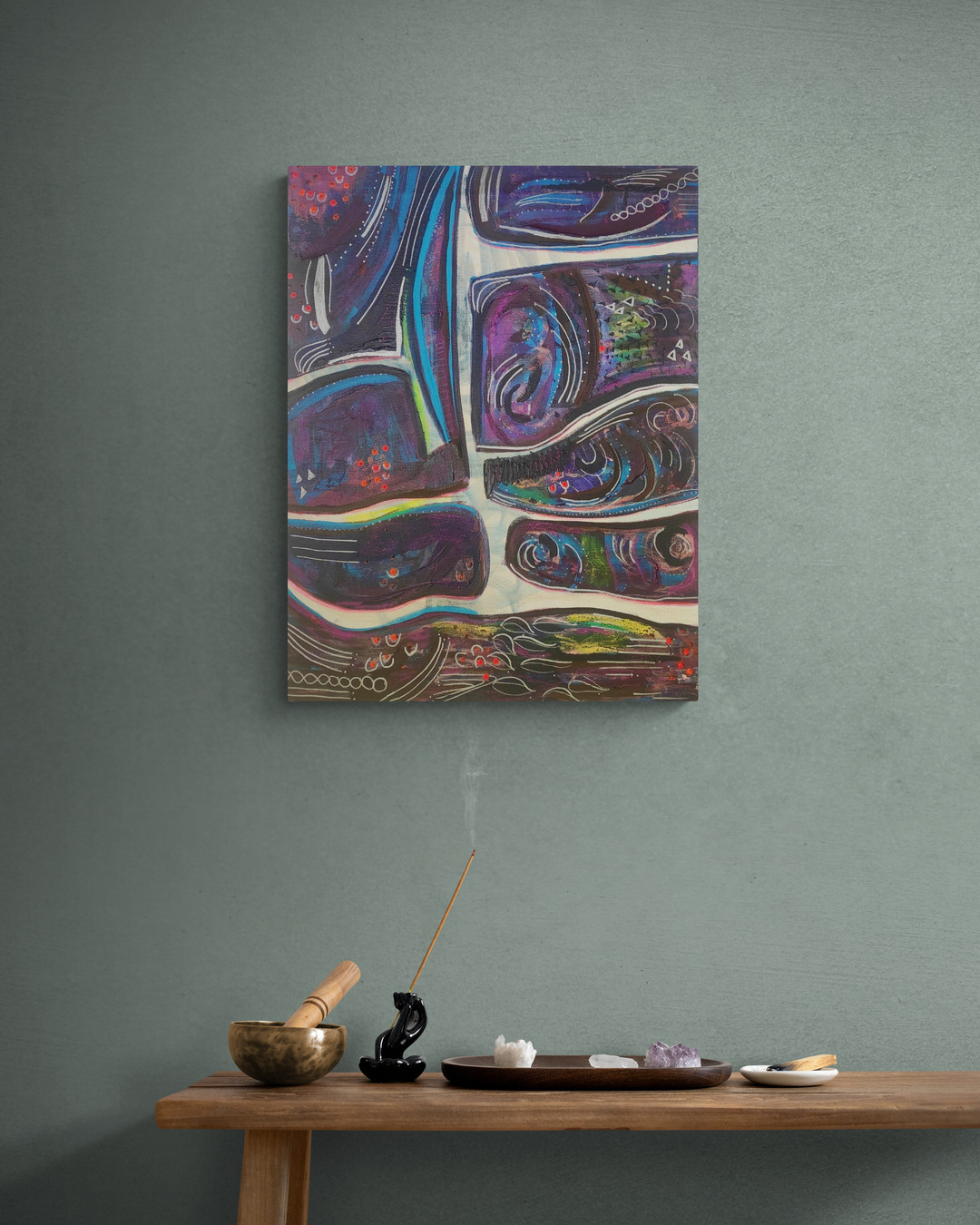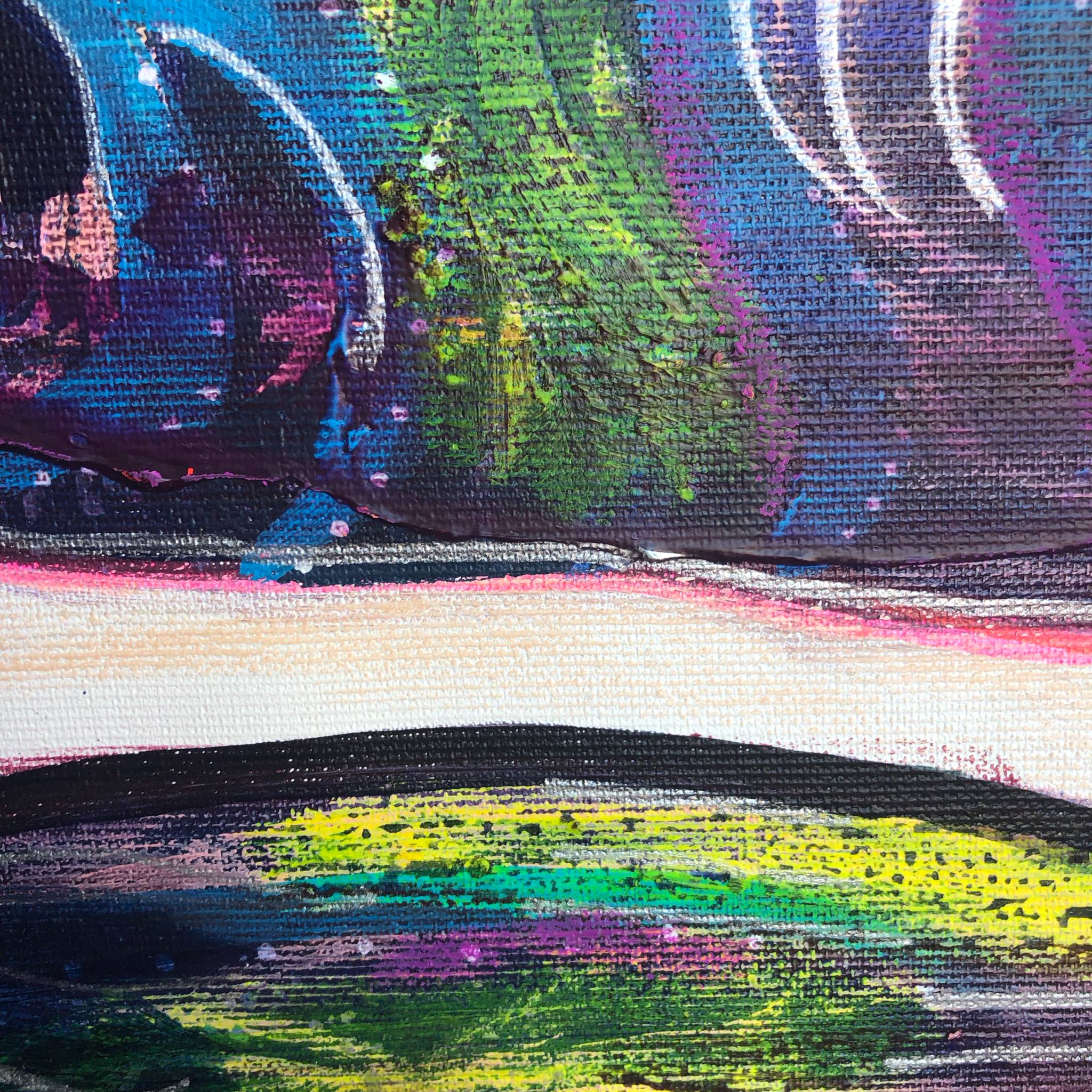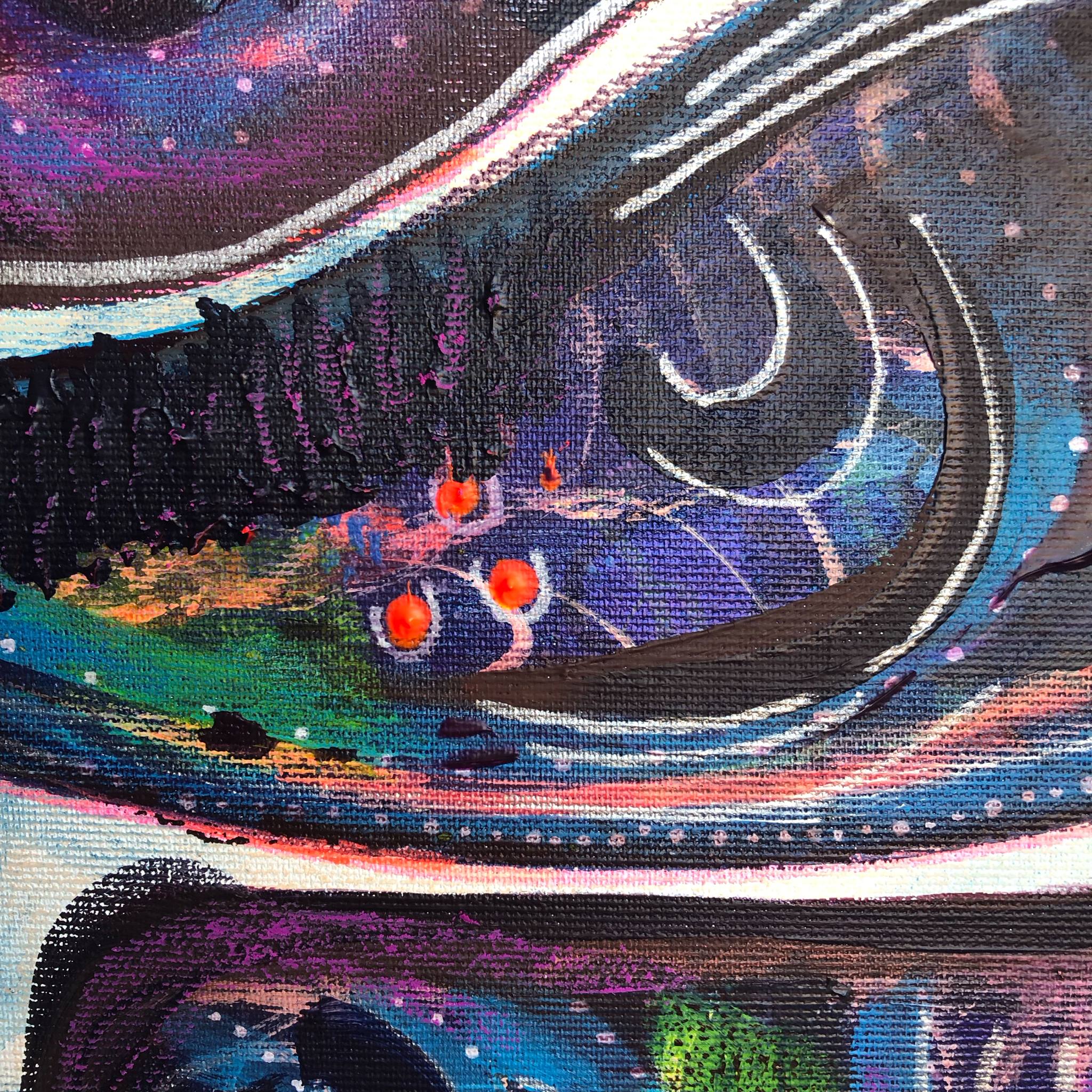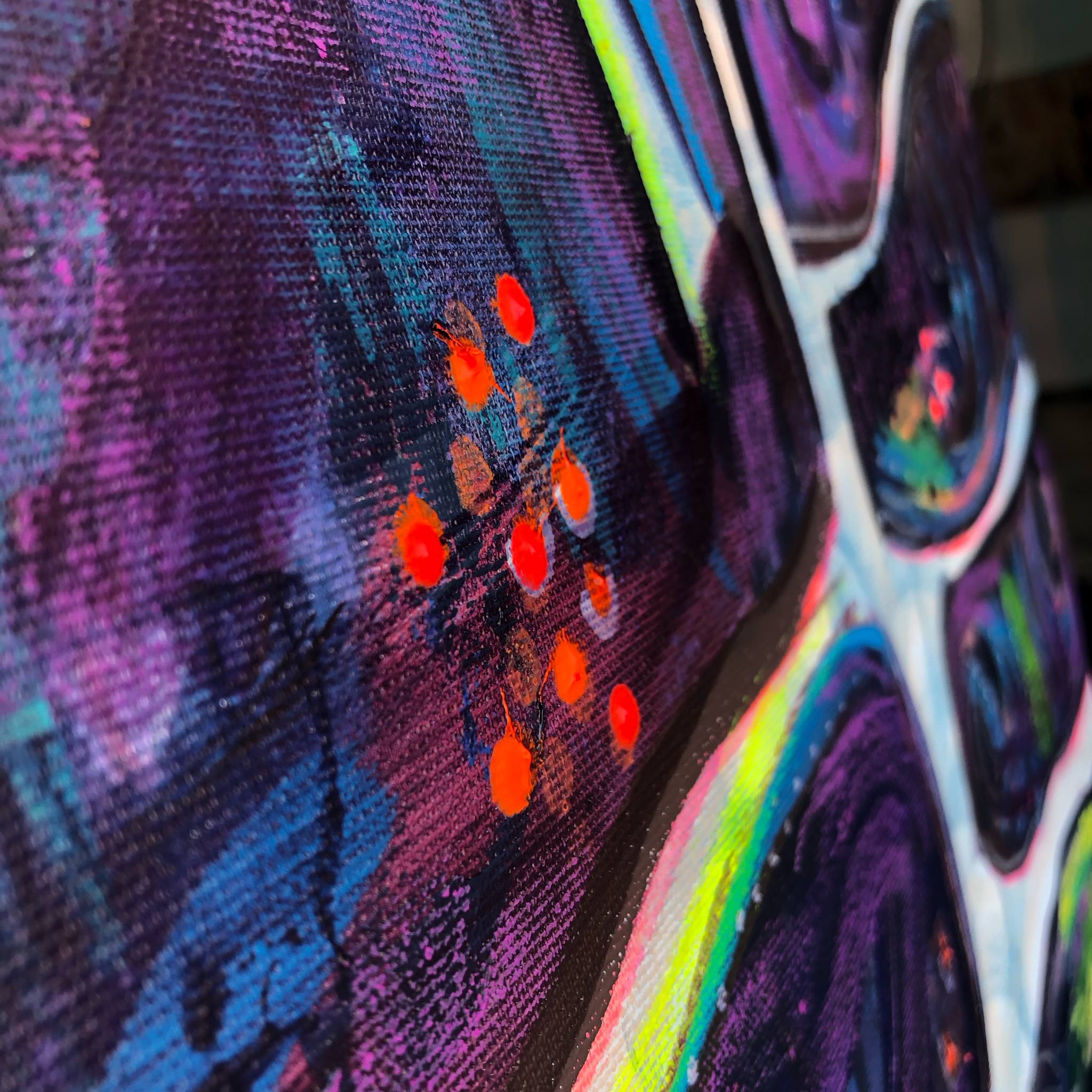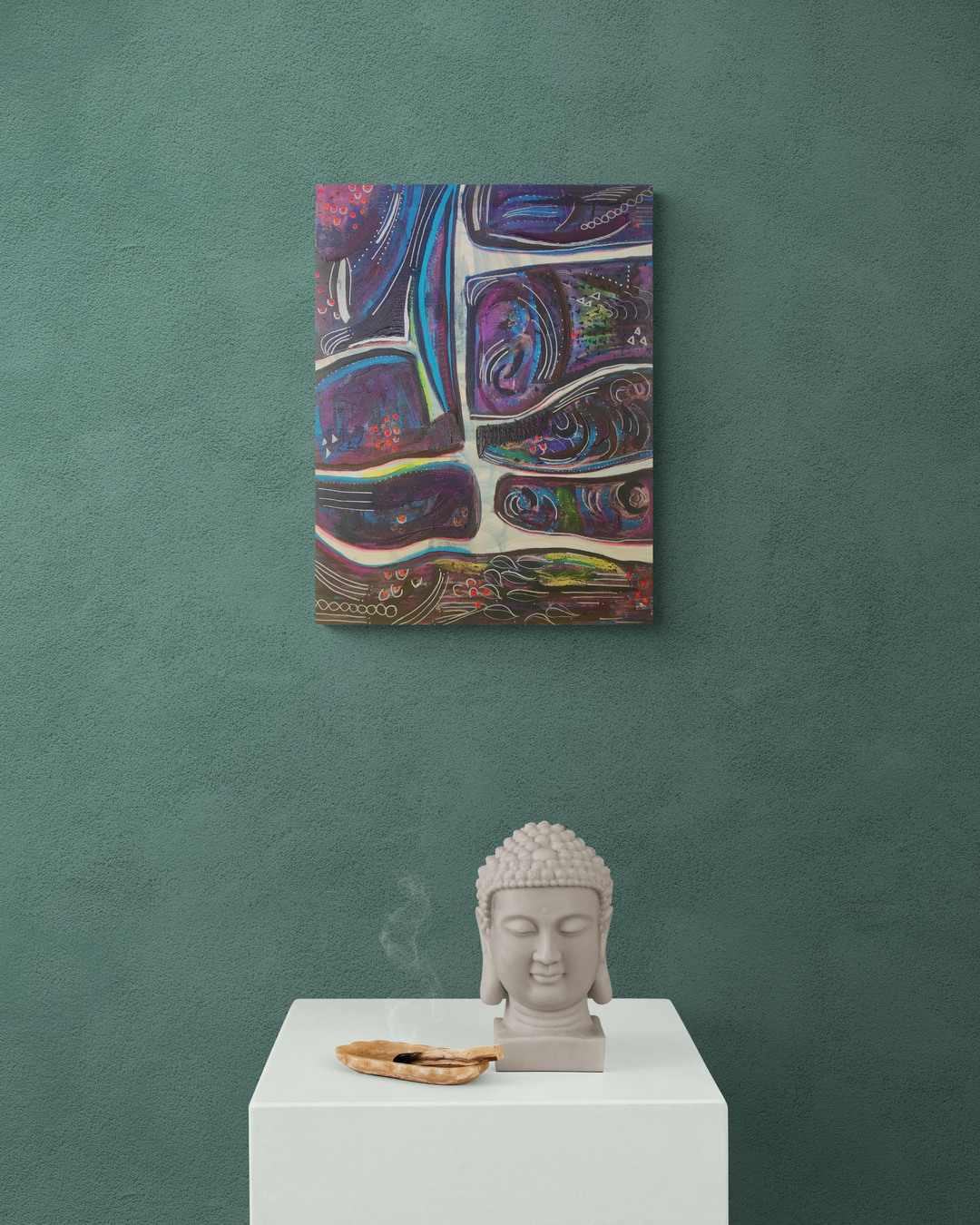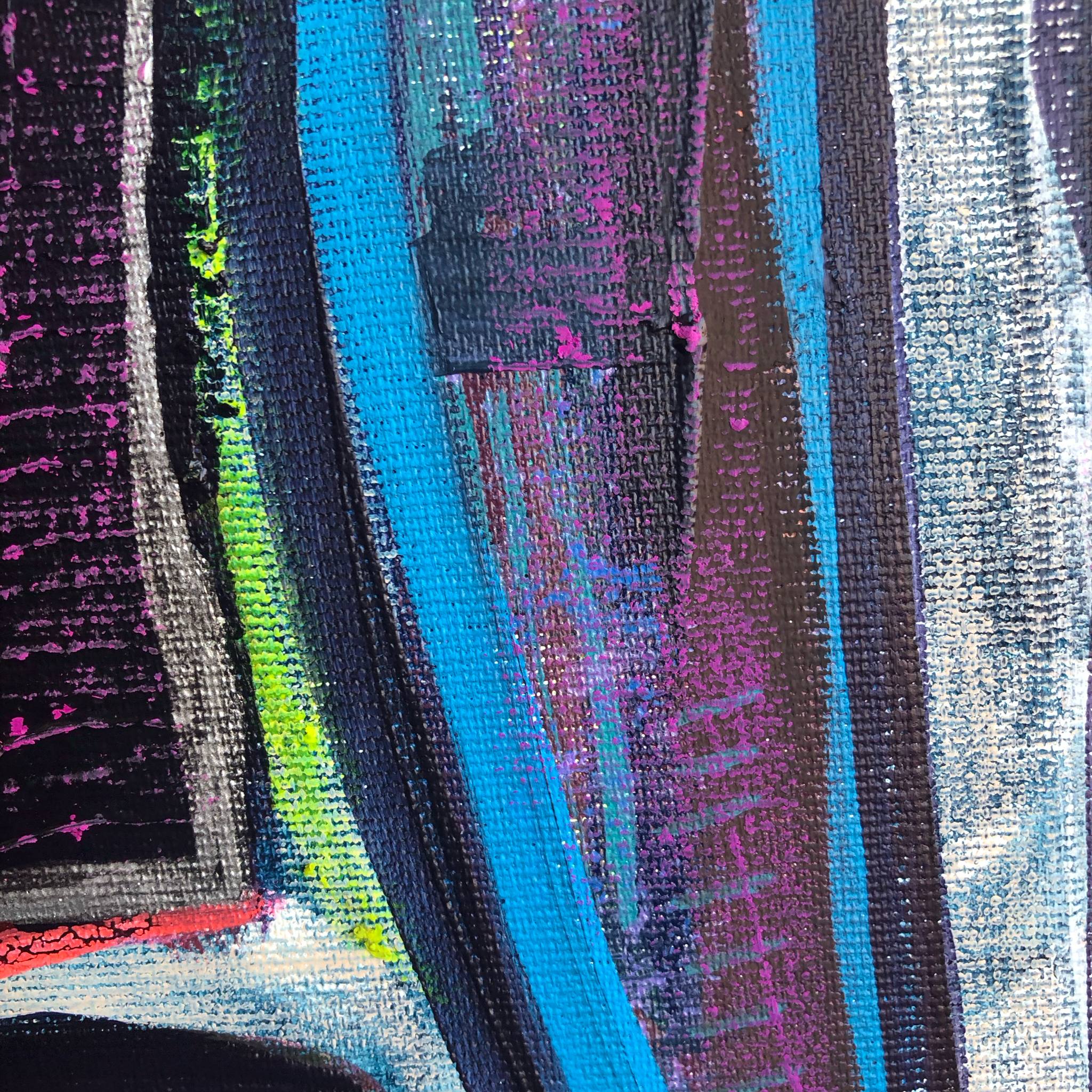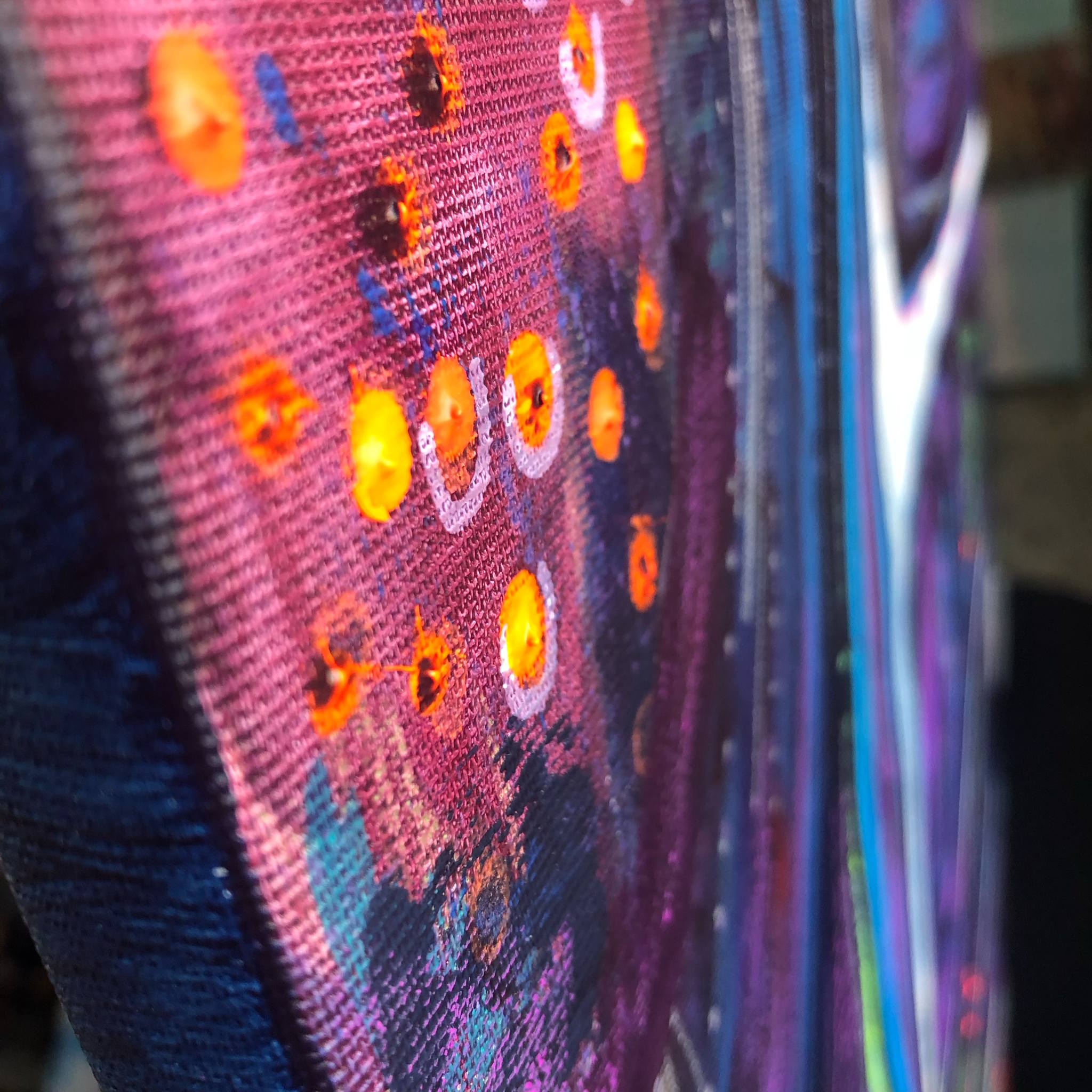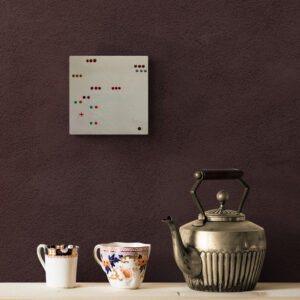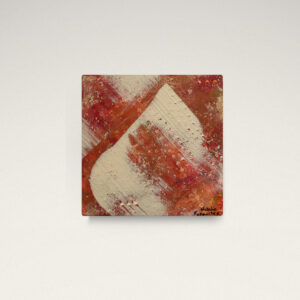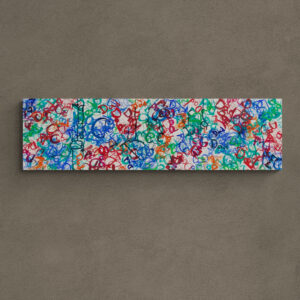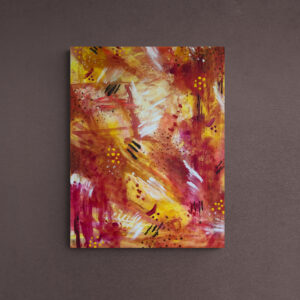This artwork diverges from my usual style… It is one of those rare pieces that seemed to come through me rather than from me. I was fully conscious of my choices, deliberately segmenting the composition to echo the structure of a kidney. Yet, the final touches, the fluid white marks, were not my usual assertive strokes of intention. Instead, they emerged almost subconsciously, bypassing thought and flowing straight from hand to canvas.
I hesitated after making those last lines. The peculiar loops, the strange, organic swirls—why had I painted them? Doubt crept in. It was only upon rereading page 79 of Ulysses that clarity arrived. Metempsychosis. The idea of souls migrating, transforming, endlessly cycling. The infinity symbols had appeared unbidden, yet they were entirely fitting. And the fish-like forms? A subconscious nod, perhaps, to The Odyssey, the epic that runs in tandem with Joyce’s narrative.
As CliffsNotes describes, this episode mirrors The Odyssey in that just as Odysseus was held captive by the nymph Calypso, so too is Bloom, in a sense, tethered to Molly. Likewise, this artwork holds the viewer—whether in attraction or intrigue, or perhaps in something more unsettling.
“Metempsychosis,” he said, “is what the ancient Greeks (blue) call it. They used to believe you could be changed into an animal or a tree, for instance. What they called nymphs, for example.”
Can you feel the nymphs within this piece? The shifting, morphing energies? Do you see the watchful eyes staring from shadowed forms, the suggestion of movement between states of being? The underlying structure, reminiscent of twisting tree limbs?
Yellow and brown hues reference Joyce’s vivid sensory details—“buttered a slice”, “scanty brown gravy,” “spoon ceased to stir up the sugar in her tea.” The sharp orange pulses at the core of this piece, tied to the sacral chakra, the energetic center of the kidneys. Fitting, too, that orange is the designated colour of Calypso, this episode of Ulysses.
And then, the final line: “The kidney! Pungent smoke shot up angry jet from a side of the pan.”
This painting captures not just the imagery of the text but the essence—the shifting energies, the undercurrents of transformation, the unseen forces guiding both the protagonist and the brushstrokes themselves.

